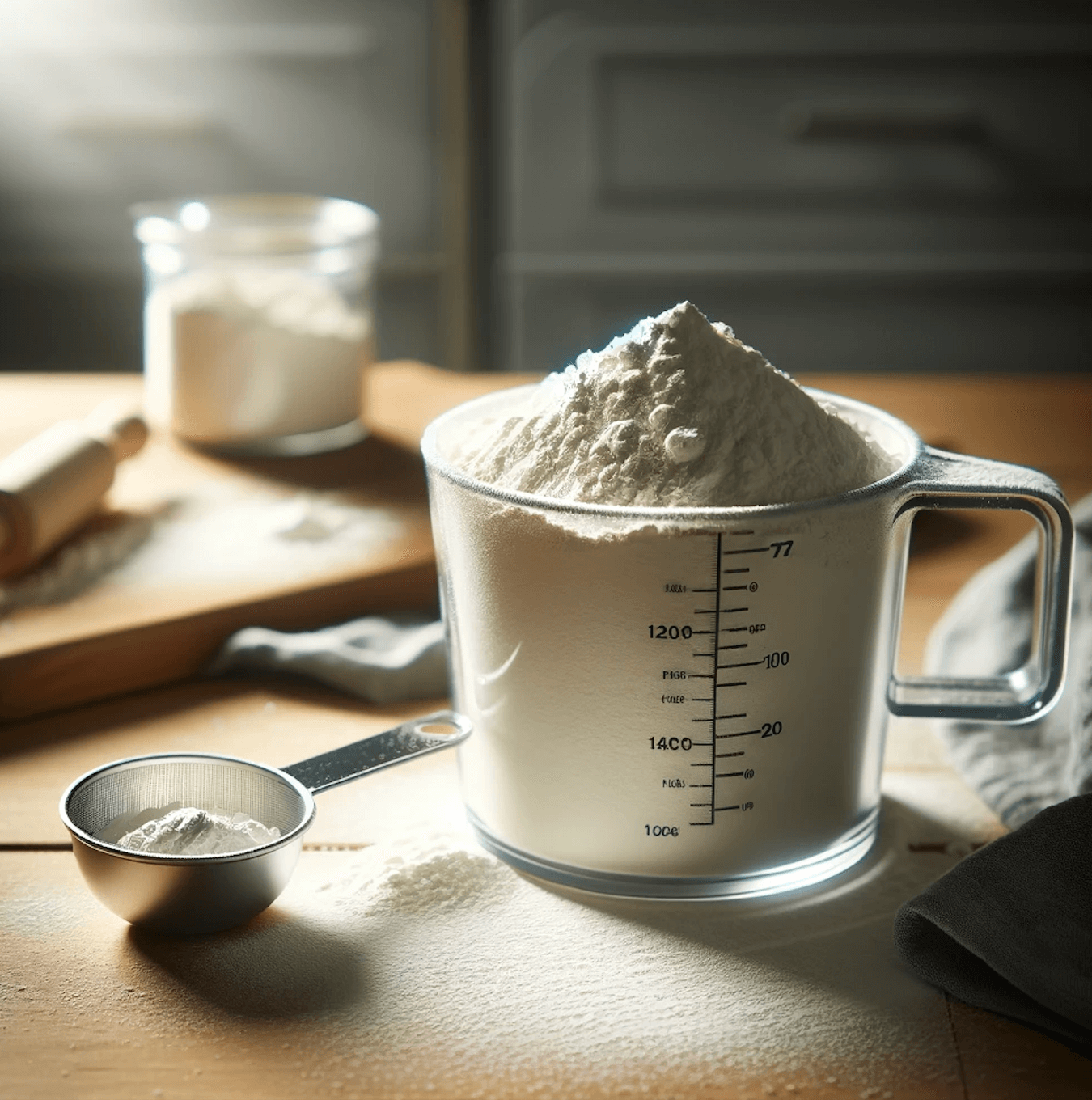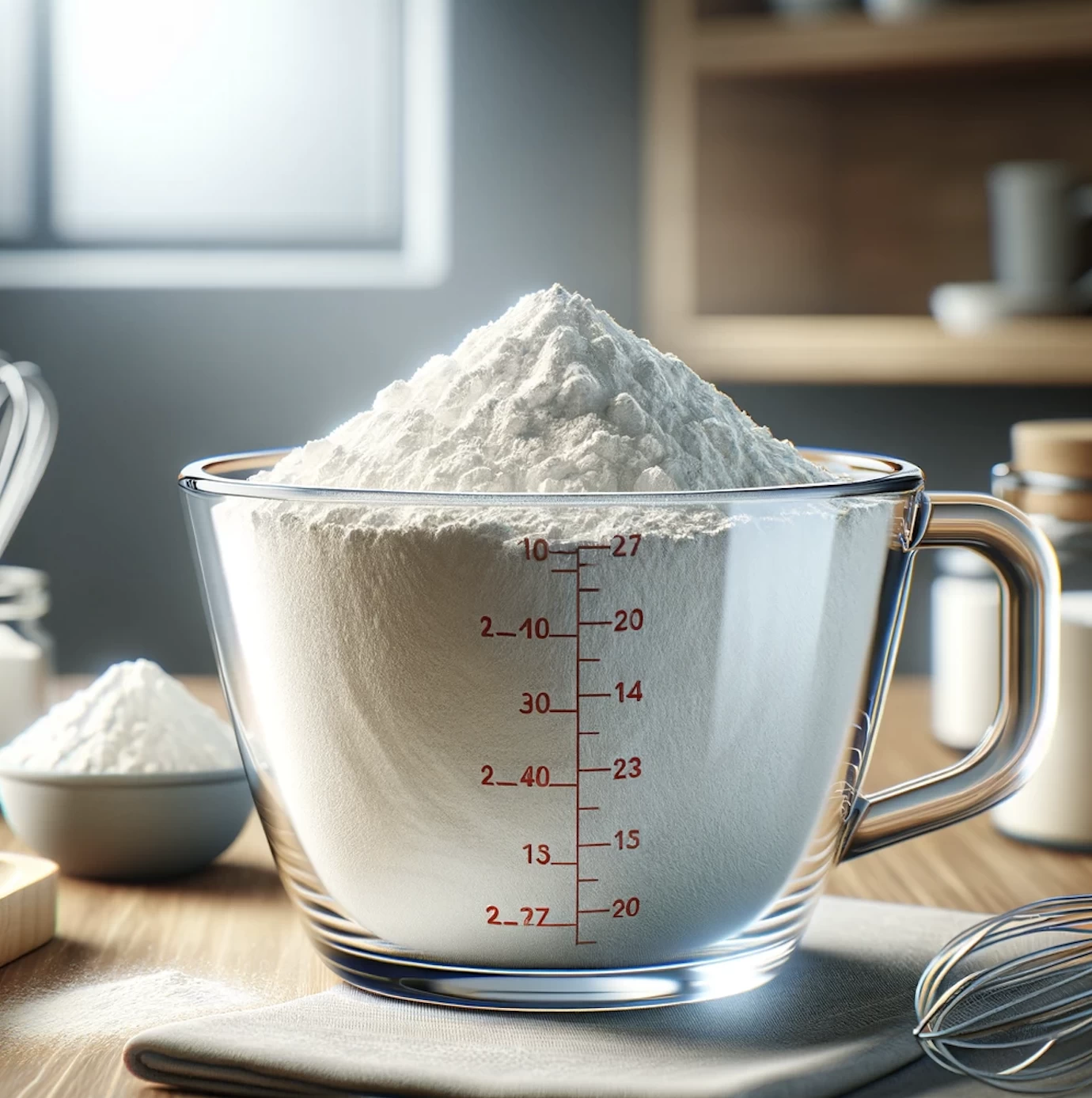300g Flour In Cups: The Ultimate Guide For Perfect Baking Every Time
Ever find yourself stuck in the kitchen wondering how many cups are in 300g of flour? You’re not alone. This is one of the most common questions among bakers, whether you're a beginner or a seasoned pro. Converting grams to cups can feel like solving a math puzzle, but don’t worry—we’ve got you covered. Let’s dive into the world of baking measurements and make this process as simple as pie.
Baking is both an art and a science, and getting your measurements right is crucial. Whether you're following a recipe from a cookbook, a food blog, or your grandma's secret notes, knowing how to convert 300g flour into cups will save you from ruined batches and disappointing results. So, buckle up, and let’s get started!
In this article, we’ll break down everything you need to know about converting 300g flour into cups. From understanding the basics of baking measurements to tips for accurate conversions, we’ve got all the info you need to become a measurement master. Let’s turn those grams into cups and take your baking game to the next level!
- Edgar Hansen The Fascinating Life And Legacy Of A Modernday Inspiration
- Belinda Nohemy Leaked Unveiling The Truth Behind The Headlines
Why Understanding 300g Flour in Cups Matters
Converting 300g flour into cups might seem like a small detail, but it can make or break your baking. Different recipes use different measurement systems, and having a solid understanding of how they work together is key. Here’s why mastering this conversion is important:
First off, baking is all about precision. Unlike cooking, where you can eyeball ingredients, baking requires exact measurements to ensure your treats turn out perfectly. If a recipe calls for 300g flour and you add too much or too little, your bread, cake, or cookies could end up flat, dry, or gooey.
Secondly, recipes from different countries often use different units. While the U.S. commonly uses cups, many international recipes rely on grams or ounces. Knowing how to convert between these units will open up a whole new world of recipes for you to try.
- Naked Nicki Minaj Nude The Untold Story Behind The Hype
- Gypsy Rose Mom Crime Scene The Untold Story Behind The Shocking Deception
What Happens If You Get It Wrong?
Messing up your flour measurements can lead to some serious baking fails. For example, if you accidentally add too much flour, your baked goods might become dense and dry. On the other hand, using too little flour can result in flat or overly moist treats. These mistakes can be frustrating, especially when you’ve spent time and effort preparing everything else perfectly.
How Many Cups is 300g Flour?
Alright, let’s get down to business. So, how many cups is 300g flour? The answer depends on the type of flour you’re using. Different flours have different densities, which means they take up different amounts of space in a measuring cup. Here’s a quick breakdown:
- All-purpose flour: Approximately 2.4 cups
- Bread flour: Around 2.3 cups
- Cake flour: Roughly 2.6 cups
- Whole wheat flour: About 2 cups
As you can see, the type of flour makes a big difference. That’s why it’s essential to know which flour your recipe calls for before making any conversions.
Why Does Flour Type Matter?
Different types of flour have varying levels of protein and moisture content, which affects their weight and volume. For instance, all-purpose flour is lighter and fluffier than whole wheat flour, so it takes up more space in a measuring cup. Understanding these differences will help you achieve better results in your baking.
Tips for Accurate Measurement
Now that you know how many cups are in 300g flour, let’s talk about how to measure it accurately. Here are some tips to ensure your measurements are spot-on:
First, use a kitchen scale. This is the most reliable way to measure flour. Simply place your bowl on the scale, hit the “tare” button to zero it out, and add your flour until you reach 300g. It’s quick, easy, and eliminates guesswork.
If you don’t have a scale, use the spoon-and-level method. This involves lightly spooning flour into your measuring cup and then leveling it off with a knife. Avoid scooping the flour directly from the bag, as this can compact it and lead to inaccurate measurements.
Common Measurement Mistakes to Avoid
Here are a few common mistakes bakers make when measuring flour:
- Scooping flour directly from the bag, which can compress it and add extra weight.
- Packing flour too tightly into the measuring cup, resulting in too much flour.
- Not leveling off the top of the measuring cup, which can lead to inconsistent results.
Avoiding these mistakes will help you achieve consistent and delicious results every time you bake.
Converting Other Measurements
While we’re focused on 300g flour in cups, it’s helpful to know how to convert other common baking ingredients as well. Here are a few conversions to keep in mind:
- 250g sugar = approximately 1 cup
- 200g butter = roughly 3/4 cup
- 100g chocolate chips = about 3/4 cup
Having these conversions handy will make it easier to adapt recipes from different sources and ensure your measurements are always accurate.
Why Are Conversions Important?
Conversions are crucial because they allow you to follow recipes from anywhere in the world. Whether you’re using a European recipe that calls for grams or an American recipe that uses cups, knowing how to convert between the two will give you the flexibility to try new recipes without worrying about measurement issues.
Understanding Baking Measurements
To truly master baking, it’s important to understand the basics of baking measurements. Here’s a quick overview:
Volume measurements, like cups, are based on how much space an ingredient takes up. Weight measurements, like grams, are based on how heavy an ingredient is. While volume measurements are convenient, weight measurements are more accurate because they account for differences in density.
For example, 1 cup of all-purpose flour might weigh 120g, but 1 cup of brown sugar could weigh 200g. This difference is why using a kitchen scale is often recommended for baking.
Which Measurement System Should You Use?
The best measurement system depends on your personal preference and the recipes you’re using. If you’re following a recipe that uses grams, stick with grams for the most accurate results. Similarly, if a recipe uses cups, use cups unless you have a scale and want to convert the measurements.
Top Tools for Accurate Measurements
Having the right tools can make all the difference in your baking journey. Here are some must-haves for accurate measurements:
- A digital kitchen scale: Essential for precise weight measurements.
- Measuring cups and spoons: Useful for volume measurements when a scale isn’t available.
- A spatula: Great for leveling off dry ingredients in measuring cups.
Investing in quality tools will make your baking process smoother and more enjoyable.
How to Choose the Right Tools
When selecting baking tools, look for durability and accuracy. A digital scale with a tare function is ideal for measuring ingredients quickly and easily. Measuring cups and spoons should be made of sturdy materials and have clear markings for easy reading.
Expert Tips for Perfect Baking
Ready to take your baking skills to the next level? Here are some expert tips to help you succeed:
First, always read the entire recipe before starting. This will give you a clear understanding of what’s required and help you avoid last-minute surprises. Second, measure your ingredients carefully. As we’ve discussed, accurate measurements are key to successful baking.
Lastly, don’t be afraid to experiment. Once you’ve mastered the basics, try tweaking recipes to make them your own. Add a pinch of cinnamon to your chocolate cake or swap out some of the flour for almond flour in your cookies. The possibilities are endless!
What If My Recipe Fails?
Don’t get discouraged if a recipe doesn’t turn out perfectly the first time. Baking is a learning process, and every mistake is an opportunity to improve. Take note of what went wrong and adjust your approach next time. With practice, you’ll become a baking expert in no time!
Conclusion: Mastering 300g Flour in Cups
Now that you know how to convert 300g flour into cups and understand the importance of accurate measurements, you’re ready to tackle any baking challenge. Remember, practice makes perfect, so don’t be afraid to experiment and try new recipes. With the right tools and techniques, you’ll be baking like a pro in no time.
So, what are you waiting for? Grab your flour, measuring cups, and kitchen scale, and let’s get baking! Don’t forget to share your creations with us in the comments below or on social media. Happy baking!
Table of Contents
- Why Understanding 300g Flour in Cups Matters
- How Many Cups is 300g Flour?
- Tips for Accurate Measurement
- Converting Other Measurements
- Understanding Baking Measurements
- Top Tools for Accurate Measurements
- Expert Tips for Perfect Baking
- Conclusion
References
For more information on baking measurements and techniques, check out these trusted resources:
- King Arthur Baking: A comprehensive guide to baking measurements.
- Bake from Scratch: Expert tips and tricks for perfect baking.
- Food52: A community-driven platform with a wealth of baking knowledge.



Detail Author:
- Name : Mrs. Gwen Medhurst DDS
- Username : haley.manuela
- Email : khalil.osinski@bosco.info
- Birthdate : 1991-03-03
- Address : 411 Yessenia River Apt. 273 West Anjali, MI 78825
- Phone : (360) 282-3521
- Company : Streich-Harvey
- Job : Maintenance Worker
- Bio : At nulla est facilis optio inventore id aliquid. Voluptas quisquam sit pariatur quae dolorum. Ut quis consequatur sit et.
Socials
tiktok:
- url : https://tiktok.com/@rauo
- username : rauo
- bio : Omnis neque maiores voluptatum dicta. Odit eos et earum quo.
- followers : 5875
- following : 2614
linkedin:
- url : https://linkedin.com/in/rau1986
- username : rau1986
- bio : Non dolor et saepe maxime et.
- followers : 6347
- following : 970
instagram:
- url : https://instagram.com/orau
- username : orau
- bio : Eos culpa iure et. Sint omnis repellendus quia est.
- followers : 6559
- following : 2356
twitter:
- url : https://twitter.com/rau1989
- username : rau1989
- bio : Quos quam perspiciatis nemo et illum. Numquam nulla a unde dolores tenetur fugiat. Inventore possimus est maxime non. Officiis commodi ut qui ut et.
- followers : 4220
- following : 1134